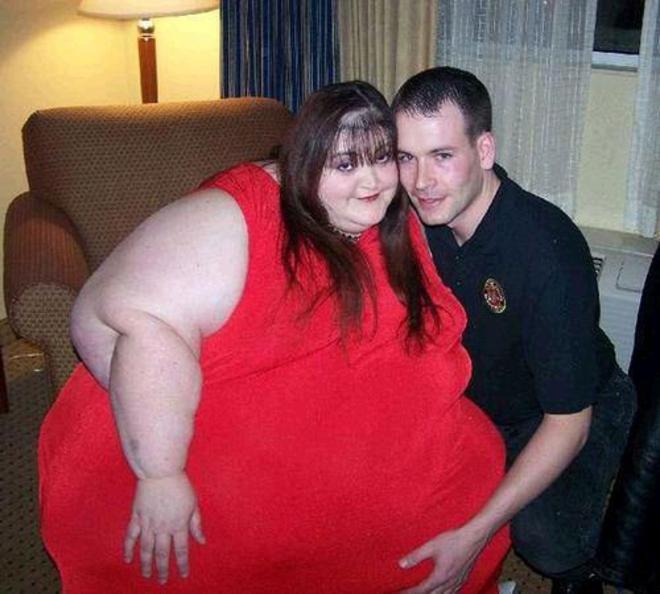
In a digital world full of curated perfection and algorithmic beauty, it’s not often that a simple couple photo breaks through the noise—unless it challenges what people expect love to look like.
Recently, an image of a couple—one strikingly slender, the other plus-sized—went viral. The contrast in their physiques sparked jokes, memes, and of course, debate. Some online commenters cheekily compared them to the number “10,” highlighting their differences in body type. But behind the punchlines and playful takes lies a deeper, more meaningful story: a relationship built on real connection, not appearances.
Love That Defies Expectations (and Algorithms)

Why do people feel so shocked by couples who don’t “match” physically? Perhaps it’s because we’re constantly fed a filtered version of love—picture-perfect pairs who fit neatly into society’s narrow beauty ideals. So when a photo shows a couple that doesn’t fit that mold, it grabs attention.
But while the internet buzzes, this couple lives their life. They laugh, cook, walk hand-in-hand, and watch movies like any other pair. Their happiness is obvious to anyone who takes a closer look—not just at their bodies, but at their bond.
Their story reminds us of a simple truth: real love isn’t about symmetry. It’s about synergy.
Why These Images Go Viral (And What It Says About Us)

Let’s be honest: contrast is eye-catching. When two people seem so different—whether in weight, height, age, or personality—our brains take notice. It’s not necessarily judgmental; it’s just how human perception works. But what happens after we notice makes all the difference.
Do we make snap judgments? Do we mock what we don’t understand? Or do we get curious—and maybe a little inspired?
These viral moments reveal more about the viewer than the viewed. Some see humor, others see hope. The healthiest take? Admiration—for a love that doesn’t conform, but thrives anyway.
The Psychology of Contrasting Couples

Psychologists have long studied what draws people together. One popular theory is homogamy, the idea that people tend to choose partners who are similar to them—physically, socially, culturally. But contrasting couples challenge that idea, offering proof that opposites attract is more than a saying—it’s sometimes reality.
So why do some people fall for someone so physically different?
Experts suggest it could be about complementary needs. A taller person may feel grounded with someone smaller; a quieter person may be energized by a more outgoing partner. In terms of body type, one partner’s presence might create emotional safety or counterbalance personal insecurities. Instead of seeking a mirror, some people seek a match that fills in their gaps.
This doesn’t make one kind of love “better” than another—it just shows how complex and individual attraction really is.
Beyond Appearances: The Power of Emotional Compatibility
Attraction starts with the eyes, but it doesn’t end there.
Lasting love is rarely based on looks alone. It’s built on emotional depth, shared experiences, and unspoken understanding. For the couple in the viral photo, it’s clear their connection runs deep. They support each other, care for one another, and move through life together as a team.
And isn’t that what we all want from love?
Their story invites us to stop reducing relationships to visuals. Instead, we should recognize the value of laughter, loyalty, and mutual respect—the invisible glue that holds people together, no matter how different they may seem on the outside.
Breaking the Beauty Binary: Redefining Relationship Goals
Social media has created a world where “relationship goals” often look like magazine covers—perfect smiles, sculpted bodies, staged sunsets. But real life isn’t always filtered, and real love definitely isn’t.
This couple (and many others like them) remind us that love doesn’t have a default setting. It’s messy, surprising, and sometimes totally unexpected. And that’s what makes it beautiful.
When people see a slender person and a plus-sized partner together, they sometimes assume imbalance—whether in attraction, self-esteem, or even status. But these assumptions say more about our biases than about the relationship itself.
Love doesn’t follow formulas. And the more we accept that, the freer we are to experience it fully—whether we’re living it or just witnessing it.
From Curiosity to Compassion: Shifting the Conversation
Of course, people will always react to what stands out. That’s human nature. But what if we shifted the conversation? What if instead of asking, “How are they together?” we asked, “What can we learn from them?”
Because here’s what we might learn:
-
That love is less about shape and more about support.
-
That connection thrives where judgment disappears.
-
That happiness is a better metric than visual harmony.
The internet may gawk, but love goes on. And that’s a powerful message in itself.
The Real Shape of Love
In a world obsessed with appearances, it takes courage to love boldly and visibly—especially when that love doesn’t fit society’s expectations.
The couple who sparked viral attention may have contrasting physiques, but their relationship shows balance in all the ways that matter. Their story reminds us that attraction isn’t just physical—it’s emotional, spiritual, and deeply human.
So the next time you see an “unusual” couple online, look beyond the surface. You might just see something rare, something beautiful, something real.
Because the truth is simple: love doesn’t come in one shape or size—it comes in many. And every single one is valid.